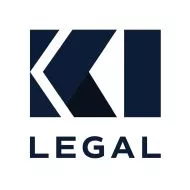How can you apply for a visitor visa? Applying for a visitor visa is a two-step process.
- Step 1: you must prepare the visa application, which includes several forms and some personal documents.
- Step 2: you must present your application at an interview with an official at a United States consulate in your country.
While this is not a complicated process, it is advised that you seek the help of an experienced immigration attorney if you have had trouble getting a visa in the past, if you have ever overstayed your visa, or if you are from a country that is thought to sponsor terrorism; as per the U.S. Department of State, the Secretary of State designates a country as a "state sponsor of terrorism" if it has "repeatedly provided support for acts of international terrorism."
Preparing your Visa Application
A visitor visa application can be divided into two types of required documents - forms and personal documents.
The forms that are required for your visitor visa application include:
- Form DS-160: The Nonimmigrant Visa Application
Form DS-160 can be filled out and submitted online. It is important that you take the receipt of submission with you to the consulate meeting.
- A receipt that demonstrates you paid the relevant machine-readable visa (MRV) application fee.
It is important that you try to pay this fee before your interview with the consulate, as most consulates will not allow you to pay the fee at the time of the interview.
- Visa reciprocity fee
If you are from a country that charges U.S. citizens a fee for a visa, then you may have to pay an additional fee. You can check the status of your country by following this link: U.S. Visa: Reciprocity and Civil Documents by Country (state.gov).
- United States Citizenship and Immigration Services (USCIS) Form I-134, aka the "Affidavit of Support."
What is USCIS Form I-134 (Affidavit of Support)? USCIS Form I-134 shows that someone in the United States is willing to take financial responsibility of you. If possible, you should have the person you are visiting sign this, as this will serve as evidence that you will not seek unlawful employment in the United States during your visit.
The personal documents that are required for your visitor visa application include:
- Your passport
Your passport must be valid for at least six months.
- A passport-type photo of you
This photo must be 2 inches by 2 inches.
- Documents that demonstrate the purpose of your trip
- Documents that prove that you will return to your foreign country before the expiration of your authorized stay
This can include documents that prove your ownership of real estate abroad and prove your active employment abroad.
- Proof of your ability to cover expenses while in the U.S.
Such expenses include:
- Form I-134, as described above;
- A letter from the friend or relative inviting you to visit, which states you are welcome to stay with him or her;
- Bank statements;
- Personal financial statements; and
- Evidence regarding your current sources of income.
- If you are traveling for tourism, you should include a copy of your itinerary and hotel arrangements.
- If you are traveling for business, you should include a letter from your foreign employer describing your job and what you will be doing for them in the United States.
This letter should explain that you will be paid from sources outside the U.S. It should also include when the company expects you to return from your trip.
- If you are traveling to the United States for medical treatment, you should include a letter from your doctor which includes your diagnosis and the reason that you must enter the U.S. for your treatment.
You will also need a letter from the doctor or facility that you are receiving treatment from, describing the length of your stay as well as its expected costs. You will need to show that you can cover the treatment financially.
Presenting your Application at the Consulate Interview
Now, what do you need to know about presenting your visitor visa application at the consulate interview? First, you must determine which consulate you will use to apply. You should try and use the U.S. consulate in your home country. If you are unable to go to the consulate in your home country, you are still allowed to apply for a visitor visa from any country with a U.S. consulate. Please note that some consulates do not allow applications from residents of another country. You should check with the US Consulate in question if they accept "third country visa applicants" for B-1/B-2 visas. If you have ever been in the U.S. unlawfully, then you are required to apply for a visitor visa from your home country. An unlawful presence in the U.S. can be anything as little as overstaying your status by just one day.
Once you have decided on the consulate that you want to use, it is in your best interest to research their visa application procedures. One common requirement is that you must schedule an appointment in advance – no consulates allow walk-in applications. For information on your consulate's visa application procedures, please follow this link - www.usembassy.gov - and select your home country to be led to the local consulate's website.
The last step in your application process will be attending the actual interview with an officer at the consulate. While this may be the most intimidating step in the process, you have no reason to worry if you are well prepared. To set yourself up for success, ensure that:
- Your Form DS-160 is properly completed and that you understand it;
- You are prepared to tell the officer how long you plan to stay in the U.S.;
- You are prepared to tell the officer the purpose of your temporary trip; and
- You feel comfortable describing your financial situation as well as your ties to your home country.
The interview may be very short, so it is important to prepare yourself so that you can appear confident in front of the consulate officer and easily articulate the temporary nature of your trip.
After your meeting with the officer at the consulate, they will then perform several security checks. This can extend the time it takes for you to hear back from the consulate regarding whether you have been granted the visa or not. The security check can take anywhere from a few days to a few weeks. If you are granted the visa, you will need to be prepared to return to the consulate to retrieve the physical visa places in your passport, which you will then use to enter the United States.
As can be seen, applying for a visitor visa is a process that requires attention to detail and familiarity with all of the required forms and documents in order to be successful.
The content of this article is intended to provide a general guide to the subject matter. Specialist advice should be sought about your specific circumstances.


